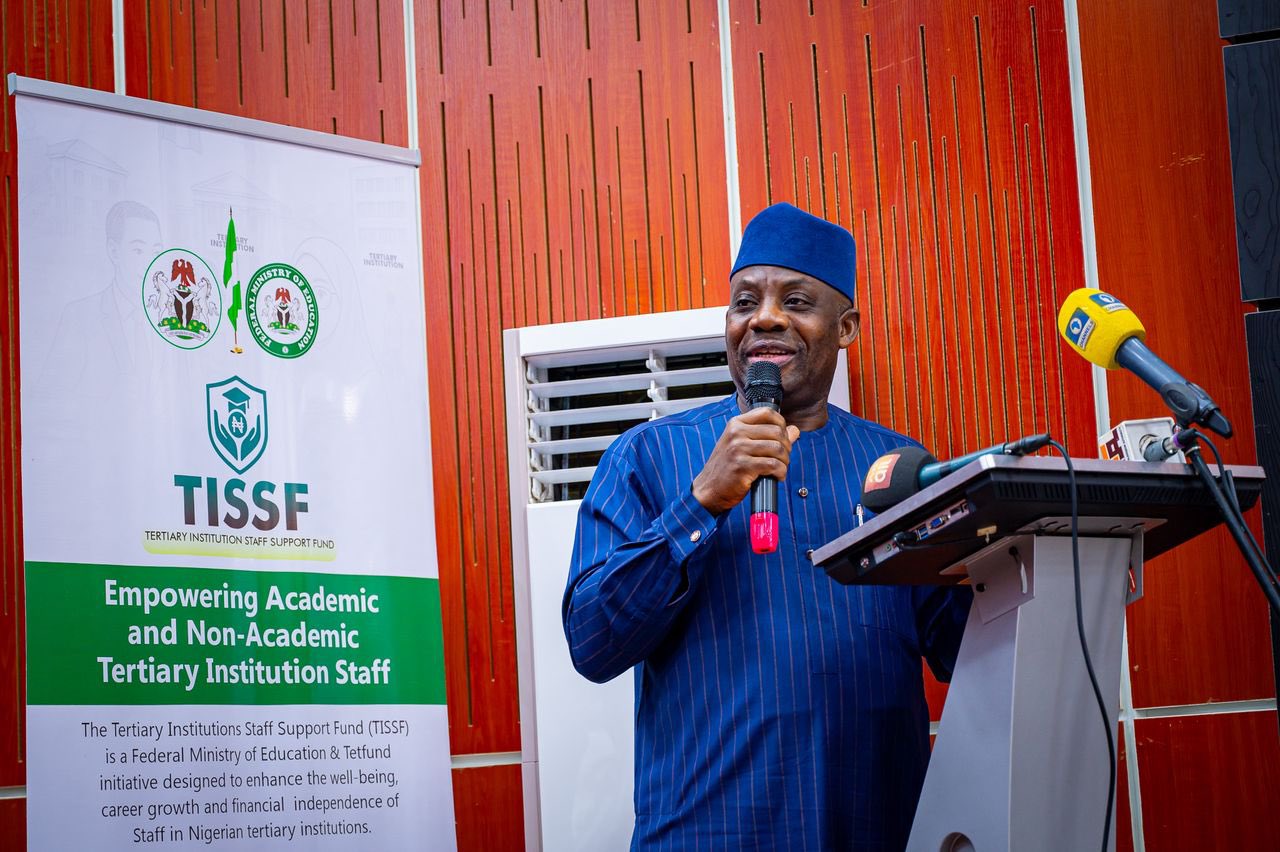Stakeholders in the education sector await the outcome of the Federal Government’s consultation and deliberation regarding its 12-year restructuring of the primary and secondary school system. Ahead of the consideration of this new model, the government also announced its intention to unbundle federal unity colleges. IYABO LAWAL explores the potential ‘unbundling’, which some say amounts to motion without movement.
There are at least 115 sprawling federal unity colleges strewn across Nigeria. Each is built on the spirit of diversity and unity, a lofty idea that has lifted the spirit of millions for several decades. Sadly, this lofty initiative has done little or nothing to take secondary education to the next level.
The government announced plans to unbundle these colleges into basic and secondary schools a few months ago. This was disclosed by the erstwhile Minister of State for Education, Dr Yusuf Sununu, in Abuja.
According to the former minister, the unbundling of the unity colleges would, among others, attract more funding to improve infrastructure, address teachers’ welfare, and create employment opportunities, among others, adding that by integrating entrepreneurship education into the curriculum, stakeholders can empower students to become job creators rather than mere job seekers.
He further highlighted entrepreneurship education’s benefits, including cultivating a resilient mindset, developing innovative solutions, and empowering job creators.
Sununu also listed four pillars underpinning the administration’s education transformation agenda: teacher empowerment through continuous training and growth; strategic integration of technology and digital learning; curriculum revitalisation for relevance and academic excellence; and forging robust partnerships with communities and industries.
“Entrepreneurship is not merely about starting a business; it is about cultivating a mindset that embraces challenges, perseveres through failures, and continuously learn from experiences. It is about instilling in our students the ability to identify opportunities, develop innovative solutions, and create value for themselves and their communities.”
By integrating entrepreneurship education into the curriculum, students are empowered to become job creators rather than mere job seekers. They are inspired to develop sustainable business models that address societal needs, drive economic growth, and contribute to national development.
Sununu specifically noted that the proposed unbundling of colleges was to enhance the quality of teaching and performance of the schools.
But whatever it is, stakeholders are wont to say that the idea of unbundling is all motion and no movement. They argue that the government is shying away from the main issues that have left the schools in shambles both academically and infrastructurally.
History punctuated by miseries
AFTER the British colonial masters established the first set of unity schools, three new ones were added in Warri, Sokoto, and Enugu in 1966, while General Yakubu Gowon, in 1973, ensured that such schools were established in all the 12 states.
For at least two decades, the schools brought about cultural and religious integration on the one hand and academic excellence on the other. However, mediocrity has crept in and eroded merit as the disparity in cut-off marks created a divide.
For instance, some pupils are admitted into unity schools with as low as two marks in the common entrance examinations, while some can only get into the same schools with at least 130 marks.
Some of these schools are battling with a severe shortage of teachers. Consequently, the Parents-Teachers Association have had to hire and pay salaries of 40 per cent of teachers in some schools.
In addition to this, the poor and life-threatening facilities in some of these schools can only compete with decrepit facilities found in police colleges and police barracks.
These schools’ terrible facilities highlight another problem – inadequate funding. Related to that is corruption in the schools.
According to the United Nations, Nigeria is one of the African countries that spends the least of its gross domestic product on education (less than that of Somalia), with its average budget for education since 1999 being less than eight per cent of the budget. This is less than one-third of the 26 per cent recommended by the United Nations Educational, Scientific and Cultural Organisation (UNESCO) for developing economies.
The cut-off marks and quota system applied in these schools remain an unclear mess too. In other words, a pupil from the South seeking admission into any of the unity schools must score at least 150 points out of a possible 300 to secure admission. However, a candidate from the North does not need to stress himself as such to be considered for admission.
The cut-off lists released by the Ministry of Education for the 2021/2022 academic year showed the huge disparity between the cut-off marks, which candidates from South-East and South-West states must have, and what candidates from the North should obtain.
According to the breakdown, Anambra has the highest cut-off of 139 marks for both males and females. In Imo State, it is 138; Enugu 134, Lagos 133; Delta 131, Ogun 131, Abia 130 and Edo 130. Osun and Oyo states were also among the top 10, with the highest cut-off of 127 marks.
The least 10 cut-off marks for unity colleges are all in the North thus: Gombe, 58; Nasarawa, 58; Borno, 45; Jigawa, 44; Bauchi, 35; Kebbi has nine for males and 20 for females. Also, Sokoto State has nine for males and 13 for females, and Zamfara has four marks for males and two for females.
Taraba and Yobe states are the least states, with Taraba State having three for males and 11 for females, while Yobe State has two for males and 27 for females.
For the 2022/2023 Session, cut-off mark for Abia State is 130; Adamawa 62; Akwa Ibom, 123; Anambra, 139; Bauchi, 35; Bayelsa, 72; Benue, 111; Borno 45; Cross River, 97; Delta 131; Ebonyi, 112; Edo, 127; Ekiti, 119; Enugu, 134; Gombe 58; Imo, 138, and Jigawa 44.
Others include Kaduna, 91; Kano, 67; Katsina 60; Kebbi, nine (male) 20 (female); Kogi, 119; Kwara, 123; Lagos 133; Nasarawa, 58; Niger, 93; Ogun, 131; Ondo, 126; Osun, 127; Oyo 127; Plateau 97; Rivers 118; Sokoto nine (male) 13 (female); Taraba three (male) 11 (female); Yobe two (male) 27 (female); Zamfara four (male) two (female) and FCT, Abuja 90.
Yet, in the spirit of diversity rather than unity, there are only 12 unity schools in the entire South-East, 18 in the South-West, and 16 in the South-South, where more than 65 per cent of candidates are said to have come from. North-East has 15 schools, North-Central has 24 while North-West has 18.
Rash of policy inconsistencies, unmet promises
THE federal government is not alien to policy somersaults. Last February, the government announced an attempt to tinker with the primary and secondary school system. For decades, the country’s education system has been in a state of flux, but with a change of academic model in the offing, concerns are looming about whether the impending overhaul will effectively modernise and enhance the effectiveness of the education system. Indeed, while the federal government’s planned 12-year compulsory basic education model inspired debates and misgivings, educators, policymakers, parents, and students are again left to their fertile imaginations as to what the outcome will be in October.
On February 6, 2025, the Minister of Education, Dr Tunji Alausa, during the 2025 extraordinary National Council on Education (NCE) meeting in Abuja, was reported to have announced the scrapping of the academic divisions of Junior Secondary School (JSS) and Senior Secondary School (SSS) paving the way for a compulsory 12-year uninterrupted basic education model.
With this development, the Nigerian government is seeking to replace the 6-3-3-4 education system with a 12-4 model, in addition to seeking the approval of the NCE to officially adopt 16 years as the minimum entry age requirement into the country’s tertiary institutions.
According to the minister, by subsuming secondary education into basic education, students will benefit from uninterrupted learning up to the age of 16.
Alausa, who said that the new policy is in line with global best practices, added that the reform will also reduce dropout rates by eliminating financial and systemic barriers that currently prevent students from completing secondary education.
Before 1982, Nigeria’s education system was designed to mimic the British system, consisting of six years of primary education, five years of secondary education, and two years of higher-level education. This system was criticized for being too academic and not equipping students with practical skills. The system was also plagued by inadequate funding, poor infrastructure, and a shortage of qualified teachers.
The country fashioned a new model- the 6-3-3-4 system to improve the situation. The model consisted of six years of primary education, three years of junior secondary education, three years of senior secondary school, and four years of higher education.
The government and its collaborators designed the 6-3-3-4 model to provide students with practical skills and prepare them to join the workforce. The system also placed significant importance on vocational training and technical education.
The comprehensive curriculum incorporated a range of subjects focused on imparting vocational skills, including woodwork, metalwork, electronics, mechanics, domestic science, and agriculture. By prioritising practical skills development, the system aims to empower students to become self-sufficient, entrepreneurial, and active participants in the nation’s economic growth and development.
This approach reflects the government’s commitment to fostering a skilled and industrious workforce capable of driving Nigeria’s socio-economic progress, even though its implementation left much to be desired.
That did not stop the government from tinkering with the system.
Presently, Nigeria’s education system stands at a critical juncture. However, stakeholders seem to agree that poor funding, corruption, and haphazard implementation of policies are decimating its delicate underbelly.
As of 2020, Nigeria’s human capital index, according to the World Bank, stood at 0.36, making it 168th out of 173 countries and ranking 152nd out of 157 nations. This is not good news.
Beyond its fleeting, glorious past, Nigeria’s education system has been in the doldrums for decades.
A former Vice Chancellor of the University of Ibadan (UI), Prof. Idowu Olayinka, cautioned the federal government against policy inconsistencies, saying the action could disrupt the educational aspirations of students already in the system.
However, he advised that whichever policy is adopted should prioritise upscaling students’ competencies.
A public analyst, Tony Obunde, noted that any policy, no matter how beautiful, would amount to mere window dressing without appropriate implementation.
“The cardinal problem of educational development in Nigeria is that we are long on policy, but short on implementation. And the first roadmap to any successful educational policy lies on the stability of the policy,” Obunde stated.
He warned that Nigeria would continue to witness under-development in the sector, as long as policy somersaults and corruption are not addressed.
Obunde noted that the problems of insufficient funding, dearth of infrastructure, and inadequate personnel in the sector, which are evident in public schools at all levels also result from policy failure.
On his part, an educationist, Dr Tunde Olaore, said the information technology capabilities of students and their trainers must be given top priority.
At the same time, Olaore noted that entrepreneurship training should be mainstreamed into the curriculum to enable the system to produce job creators, and not job seekers.
In the final analysis, the federal government’s proposed unbundling of unity colleges leaves much to be desired.






